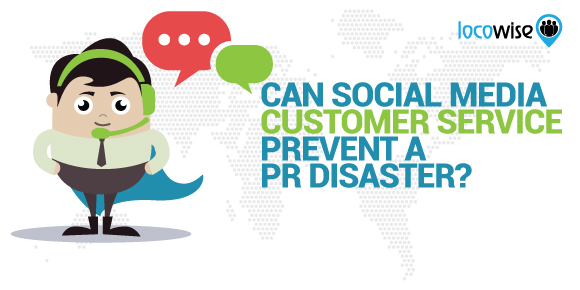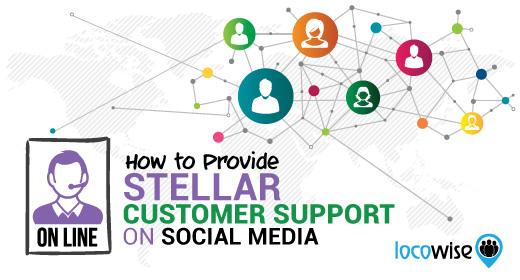Can Social Media Customer Service Prevent A PR Disaster?
Sahail Ashraf posted on 8 June 2017
You may have noticed it recently if you follow the news at all. Whether it’s world news or local news, you will have seen that the average person is now quite likely to pop up in a news report with their ‘reaction’ to an event.
This is usually a tweet or Facebook post that a person has uploaded in response to tragedy or controversy. Sometimes it is even both. The Digital Citizen is fast approaching realisation. News outlets have no problem at all with essentially making the Digital Citizen a mouthpiece. And perhaps even more important than the official word on situations from authorities.
This has tremendous implications for brands. If they don’t recognise the Digital Citizen and the impact these people can have on their brand’s image, it can backfire very quickly. One wrong post or an update that is wide of the mark that is good taste could easily land a brand in hot water.

And we think that even if the President of the USA is being called out on his less than sophisticated tweets (exclamation marks in the President’s tweets?) brands are easier targets. As long as the social media strategy is robust enough and sensible enough to avoid creating posts that will cause controversy, things should be okay.
Kendall Jenner and Pepsi
Pepsi has historically struggled against its bigger and more iconic rival Coca-Cola. It is a big deal, and has actually resulted in some pretty underhanded work from both sides over the years. But Pepsi’s recent attempt to put the fear into Coca-Cola may well have resulted in one of the most passionate backlashes in social media history.
The brand not only did it wrong, it managed to offend people. The campaign involved Kendall Jenner too. While not everyone in the world hates Kendall, it probably did Pepsi absolutely no favours to parachute her into a campaign that instantly became controversial. She’s controversial herself, all by herself in fact. So Pepsi didn’t need to give their detractors even more ammo.
So the video in question (watch it in full here) is seemingly innocent at the start. It shows Kendall doing what she does best, which is model clothes and look pretty fabulous. At the same time, the film crew managed to sneak in some shots of young, attractive artists and ‘fun’ people working hard at their craft.
And then everyone (apart from Kendall at first) notices a protest passing by on the street. This is a protest, and these people are young and clearly passionate about what they do (one is a musician, another a woman who seems angry about some images she is looking at). This means they want to get involved. Eventually, everyone including Kendall is out on the street protesting against whatever the movement is angry about (this is never made clear).
The police are doing their bit to keep the baying mob back. But because Kendall is cool and she knows just how refreshing and universal Pepsi is, she takes a can and offers it to one of the soldiers. The soldier drinks it and a party seems to start.
The message is clear: Pepsi helps stop ugly stuff from happening. It’s well-shot, has attractive people in it, a great soundtrack, but what it doesn’t have is integrity. At least that is what the many detractors of the ad have claimed. They feel it is cynical and that it exploits young people. Protests as fashion, in other words.
And again, this is not helped by Kendall’s presence. She seems to stoke up a lot of anger whatever she does. It could be argued that this is the most ill-judged thing Pepsi has done in a while.
However, this whole thing could have died down had Pepsi decided to listen to all of the angry noises sprouting up on social media. There was a veritable storm of ire and disgust at the way Pepsi decided to make Kendall Jenner a figurehead for a protest that was about as generic as it could possibly be.
The signs were not linked to any cause (for obvious reasons) but this didn’t lend the whole thing any credibility. And as for Kendall taking her wig off to show authenticity? Well, that kind of annoyed people even more.
Pepsi pulled the ad after the anger grew to deafening heights. But this was basically too late. The ad became an object of derision and ridicule. This was made even more painful with the fact that Pepsi certainly must have realised that it could have squashed the problem quicker.
This shows how fast things happen on social media these days. Bad work gets picked up, then picked on, and before you know it there is a campaign against your brand. Just take a look at this tweet to get a real sense of how angry the ordinary digital citizen can be.
The inoffensive generic protest signs in Pepsi's woke Kendall Jenner ad are hilarious. pic.twitter.com/9t2h6YxCZL
— Ronan Farrow (@RonanFarrow) April 4, 2017
What should have happened
The brand or its agency should have been there, waiting, right at the launch of the ad. If they had been a little more proactive (you can still be proactive when problems occur), they would have worked out a plan to manage such a mess. They would have been able to deal with the complaints in a way that showed their human side (everyone makes mistakes). In fact, it is not so far from the truth that the negative could have been turned into a positive.
If Pepsi had engaged quickly with the backlash, and worked to maintain the trust it has with customers, the problem would have gone away a lot quicker.
The lesson? Maintain your listening work on social media. Brands can be torn apart by the anger and complaints on social media. If you want to avoid a PR meltdown, listen to your customers and be, above all else, human.





